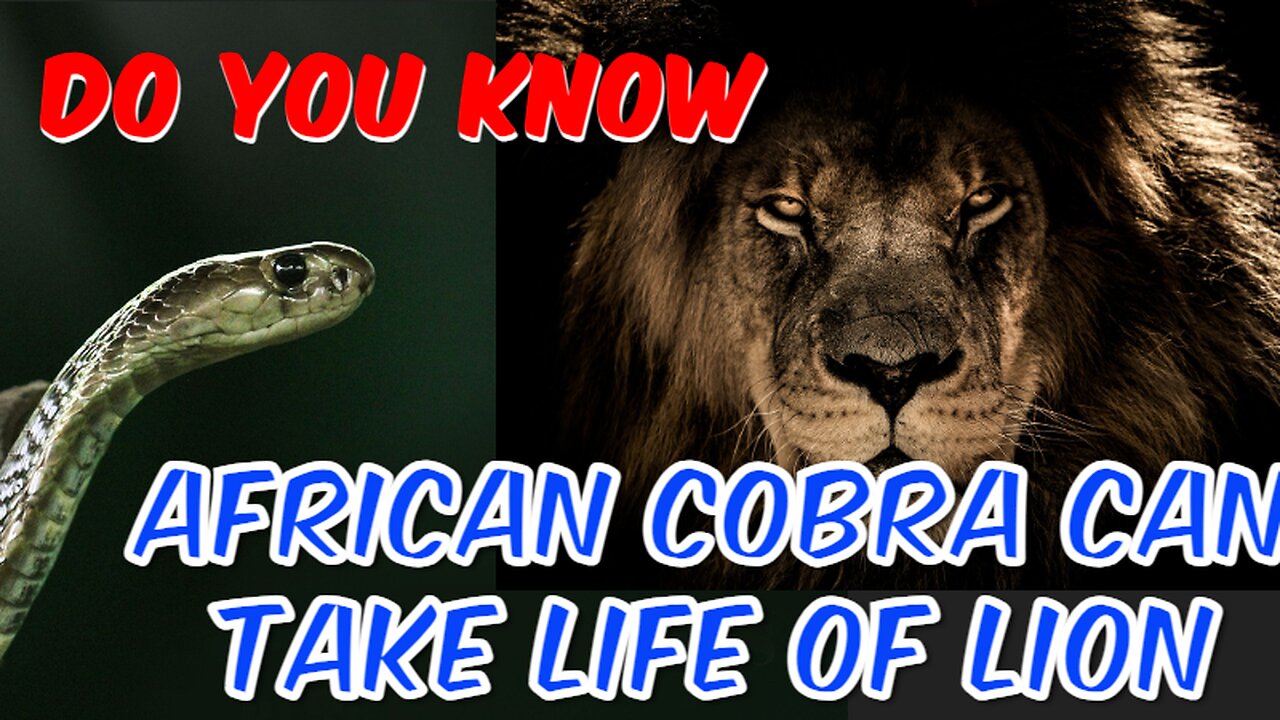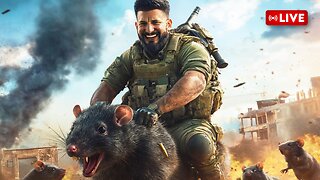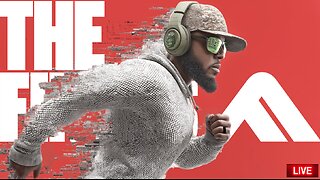Premium Only Content

Cobra's Bite The African Cobra can take life of lion | facts about cobra
#cobra #animals #king #kingcobra #african #africancobra
Cobras are a group of venomous snakes known for their distinctive hoods and potentially deadly bites. Here are some interesting facts about cobras:
Venomous Species: Cobras belong to the family Elapidae, which includes some of the world's most venomous snake species. Their venom is primarily used to immobilize and digest their prey.
Hooded Appearance: Cobras are famous for their ability to flatten and spread the skin around their necks, creating a hood-like shape when threatened or agitated. This display is intended to make them appear larger and more intimidating.
Venom Delivery: Cobras have long, hollow fangs in the front of their mouths that allow them to deliver venom effectively. When they bite, venom is injected into their prey or a potential threat.
Range: Cobras are found in a variety of habitats across Africa and Asia. Different species have adapted to thrive in environments ranging from forests and grasslands to deserts.
Diverse Species: There are many different species of cobras, including the Indian cobra, King cobra, Cape cobra, Black-necked cobra, and Forest cobra, to name a few. Each species has its own unique characteristics and habitat preferences.
Diet: Cobras are carnivorous and primarily feed on other reptiles, amphibians, small mammals, and birds. They are skilled hunters and often rely on their keen eyesight and sense of smell to locate prey.
Venom Composition: Cobra venom contains a mixture of enzymes and toxins that can vary among species. The venom is primarily used to immobilize and digest prey, but it can also be lethal to humans if bitten.
Venom Effects: Cobra envenomation in humans can lead to symptoms such as paralysis, tissue necrosis, and even death if not treated promptly with antivenom.
Defensive Behavior: Cobras are generally shy and will attempt to avoid confrontation with humans or potential threats. However, when cornered or provoked, they may raise their hoods, hiss loudly, and strike if they feel threatened.
Reproduction: Cobras are oviparous, which means they lay eggs. After a female cobra lays her eggs, she will guard them until they hatch. Once the hatchlings emerge, they are fully independent and must fend for themselves.
King Cobra: The King cobra is the world's largest venomous snake, known for its impressive size and striking appearance. It is also unique among cobras because it can raise its body off the ground when threatened.
Cultural Significance: Cobras have played significant roles in the mythology and culture of various societies, especially in Asia. They are often depicted in art, religion, and folklore, and are sometimes associated with deities or considered symbols of power and protection.
Remember that while cobras are fascinating creatures, they should be treated with caution and respect in their natural habitats to avoid dangerous encounters. If you encounter a cobra or any other venomous snake, it's essential to prioritize safety and seek professional assistance if needed.
-
 LIVE
LIVE
SpartakusLIVE
2 hours ago#1 Rocket CHAMPION of Verdansk wields UNSTOPPABLE new META
275 watching -
 40:13
40:13
MattMorseTV
2 hours ago🔴It's EVEN WORSE than we thought...🔴
12K31 -
 LIVE
LIVE
The Jimmy Dore Show
2 hours agoSnoop Dogg Is DONE w/ LBGTQ+ Propaganda In Kids Movies! Trump Outlaws Burning the U.S. Flag!
7,305 watching -
 LIVE
LIVE
MissesMaam
4 hours agoDying Light w/ Da Bois💚✨
129 watching -
 LIVE
LIVE
Sgt Wilky Plays
54 minutes agoThe Finals with the Pack
35 watching -
 32:55
32:55
Clickbait Wasteland
9 hours ago $0.05 earnedAsking New Yorkers Who They Support For Mayor: Wall Street
3.29K -
 LIVE
LIVE
Spartan
44 minutes agoLittle bit of Halo and Expedition 33
9 watching -
 LIVE
LIVE
Fragniac
2 hours ago🔴LIVE - FRAGNIAC - THE FINALS w/ The @BrrrapPack❗ ( -_•)╦ ╤─💥
22 watching -
 LIVE
LIVE
LIVE WITH CHRIS'WORLD
3 hours agoLIVE WITH CHRIS’WORLD - A Shocking New Twist to The Same Old Game
114 watching -
 LIVE
LIVE
LFA TV
1 day agoLFA TV ALL DAY STREAM - MONDAY 8/25/25
763 watching